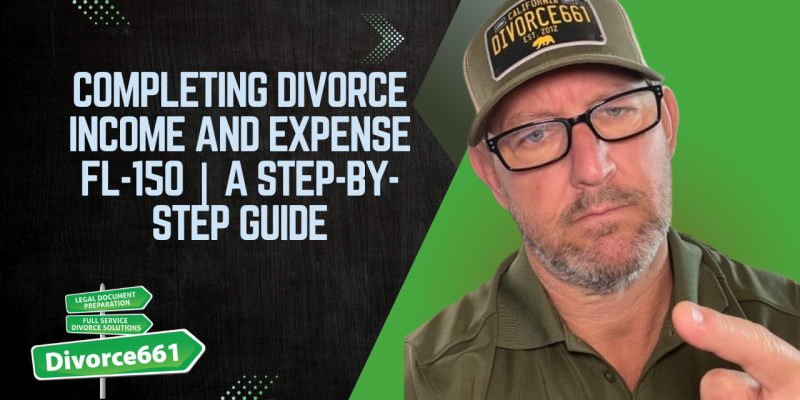How to Avoid Filing FL-150 in Your California Divorce
When navigating a divorce in California, the paperwork can feel overwhelming—especially when it comes to financial disclosures. One common question I encounter is how to avoid filing the Income and Expense Declaration, known as the FL-150 form, with the court. Whether you’re trying to simplify your process or maintain privacy, understanding when this form is required and when it is not can save you time and stress.
In this article, I’ll walk you through the key points about the FL-150 form, clarify when it must be filed, and share a practical workaround if you want to avoid filing it, especially when minor children are involved.
What Is the FL-150 Income and Expense Declaration?
The FL-150 is a mandatory financial disclosure form used in California divorce cases. It requires both parties to list their income, expenses, assets, and debts. The information helps the court make decisions about child support, spousal support, and division of assets.
When Is Filing the FL-150 Mandatory?
Here’s the important part: if there are no minor children involved, you are not required to file the FL-150 form with the court anywhere in California. This is great news for couples who want to keep their financial details private or simplify their divorce process when children are not a factor.
However, the rules change if minor children are involved. In cases with children, filing the FL-150 becomes mandatory if you have either a default case or a “default with written agreement” case. This is because the court needs a clear understanding of the financial situation to make appropriate child support and custody decisions.
How to Avoid Filing the FL-150 When Minor Children Are Involved
If you have minor children but want to avoid filing the Income and Expense Declaration, there is a workaround that can be effective.
- Have the respondent file an official response. Normally, in amicable divorces, a formal response isn’t necessary. But when children are involved and you want to avoid submitting the FL-150, having the respondent file a formal response means they have made an official appearance in the case.
- Filing the response eliminates the need to file financial declarations. Once the respondent officially appears, the court does not require the FL-150 to be filed.
This strategy can be helpful to avoid unnecessary paperwork while still complying with court procedures. It’s important to remember that this approach is specific to cases involving minor children and may not be applicable in all situations.
Summary
To recap:
- If no minor children are involved in your California divorce, filing the FL-150 Income and Expense Declaration is not required.
- If minor children are involved, filing the FL-150 is mandatory in default or default with written agreement cases.
- A useful workaround is to have the respondent file a formal response, which then removes the requirement to file the FL-150.
Understanding these nuances can make your divorce process smoother and less stressful. Always consider consulting with a legal professional to ensure that any strategy you use complies with your specific case requirements.
For more insights on navigating divorce in California, stay informed and take control of your process.



